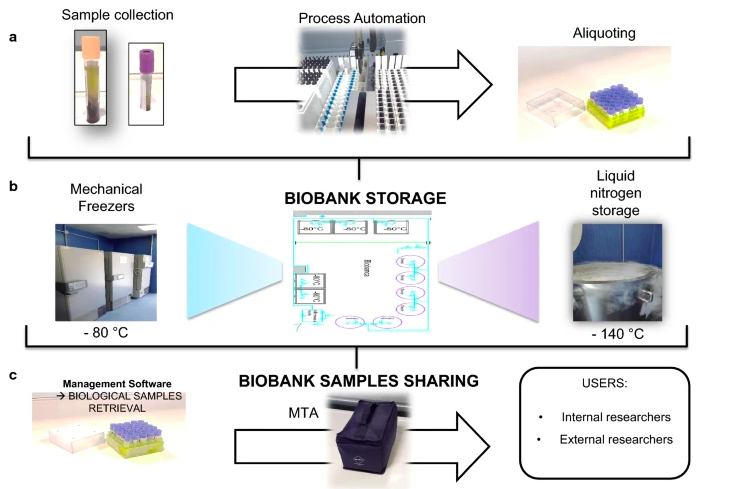The last several decades have seen tremendous improvements in the collection and storage of human samples, allowing the worldwide scientific community to obtain significant results in the field of medical research. Today we can collect, store, and preserve tissues, cells, DNA, proteins, and other subcellular components on a long-term basis.
Modern biobanks permit large-scale analysis for the individuation of specific diseases biomarkers starting from biological or digital material (i.e., bioimages) with well-annotated clinical and biological data. These features are essential for improving personalized medical approaches, where effective biomarker identification is critical for disease diagnosis and prognosis.
Hypothetical workflow model for the collection, storage, and distribution of samples in biobanking.
Read this review paper that discusses how the promising field of biobanking can support health care research strategies. This manuscript aims to provide a basic understanding of biobanking over time and describe how biobanks became essential structures for modern medical research.
- First section: Provides a general overview of the evolution of biobanking.
- Second section: Describes how the collection, processing, and storage of human biological samples are evolving and addresses the need to harmonize procedures related to biobanking.
- Final section: Describes the ISO standards as international procedures to harmonize the data obtained from biological samples.
